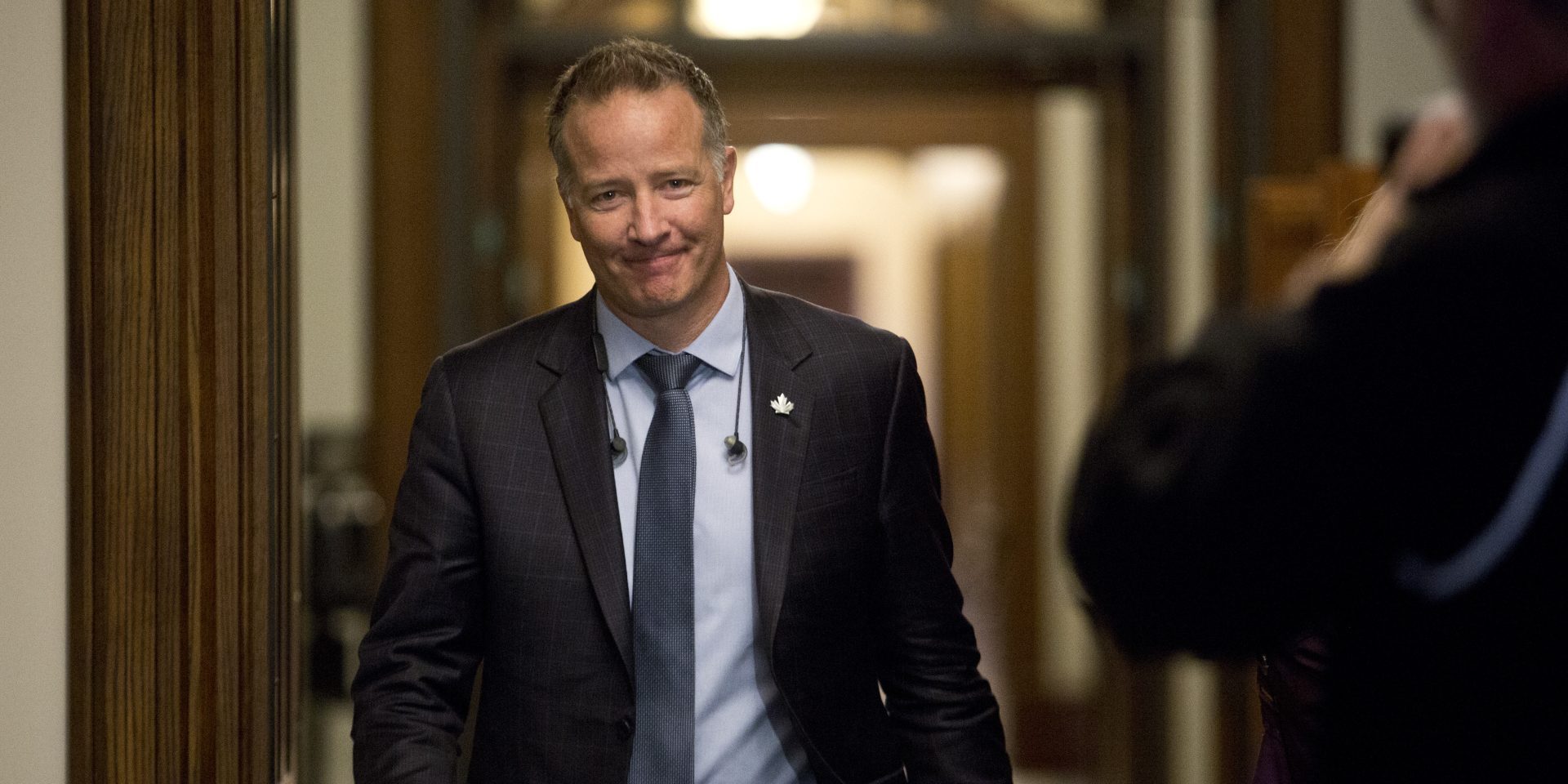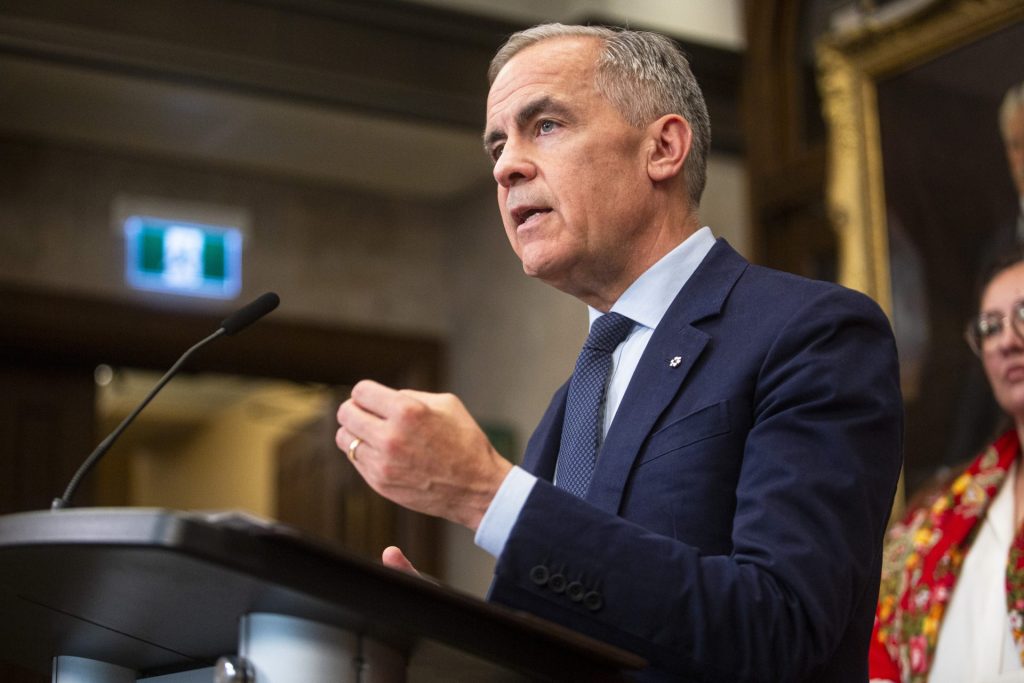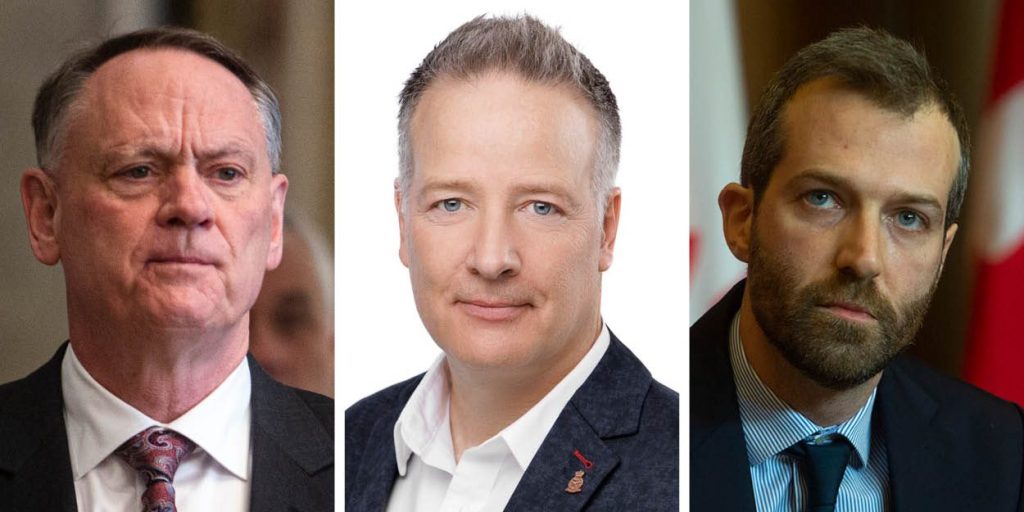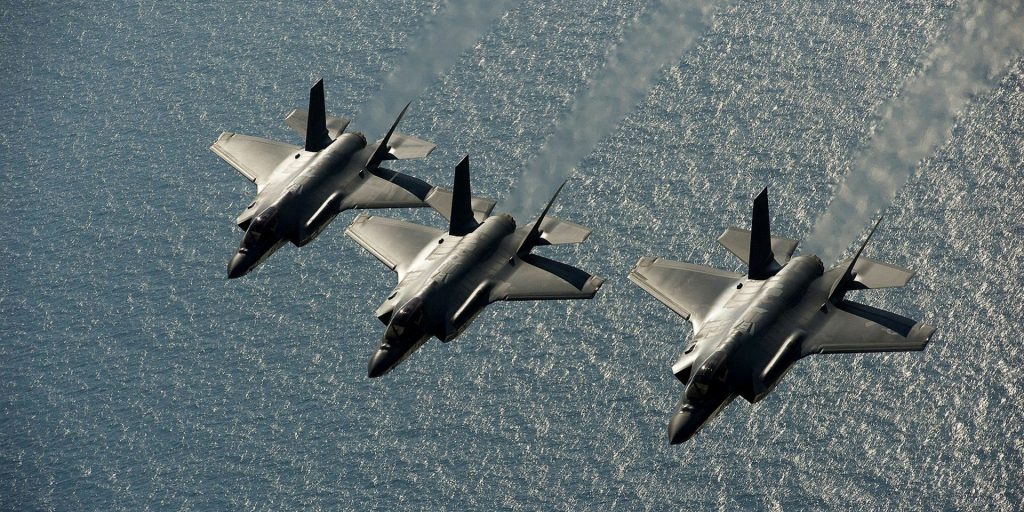‘We don’t have a choice here’: SecState for defence procurement Fuhr pledges to move ‘quicker,’ take more risks

Secretary of State for Defence Procurement Stephen Fuhr says he is ready to own the risks and responsibility of procurement, push for faster timelines, and confront “resistance to change” to get billions of dollars in spending moving to hit the government’s 2026 NATO spending targets.
Fuhr (Kelowna, B.C.) made his first public remarks since taking on the defence procurement file in an Aug. 8 address at the Aerospace, Defence, and Security Expo in British Columbia.
The junior minister said his immediate priority is “dispatching the money we committed to” in line with Canada’s NATO targets, even if it means cutting through bottlenecks of departmental approvals and accepting more risk to speed up delivery.
“The process needs to happen quicker. You introduce risks when you go fast. I’m okay with that because I’m going to be focused on this 100 per cent of my time. I think I can mitigate some of the risks of going quick because I’m a single point of accountability, which everybody wants,” he told industry leaders gathered in Kelowna.
Canada’s defence procurement system has been long plagued by delays in major military purchases, cost overruns, insufficient funding, and lack of accountability, leaving the Canadian Armed Forces with outdated or obsolete equipment.
The Liberal government under Prime Minister Mark Carney (Nepean, Ont.) promised to overhaul the system through a new agency focused on centralizing, modernizing, and expediting the military acquisition process.

In June, the government announced $9.3-billion in additional funding for defence this fiscal year, with $2-billion allocated to reducing Canada’s reliance on the United States. The additional funds will push this country’s total planned spending to $63-billion in 2025-26, and bring Canada to NATO’s two per cent of GDP benchmark. Carney also pledged to increase spending to five per cent of GDP by 2035, which he said would cost the government $150-billion per year.
Fuhr signalled that there is now the political will—something defence insiders long said was missing before—to reform defence procurement with “a prime minister that wants it done.” While the machinery of government is “generally resistant to change,” given the rocky relationship with the U.S., and a shifting global order, there is enough motivation to move forward, he said.
“We’re going to spend a lot of money this year, next year, in the coming years … We’re going to build out the Canadian defence industrial complex at a speed and magnitude we just haven’t done before,” Fuhr said.
“Because we have to. We don’t have a choice here. Look at what’s going on around the world. We have to stand up on our own two feet a little bit more than we’ve done in the past.”
The government spent at least $1.7-billion on defence contracts in the first half of 2025, about 16 per cent of which went to American companies, according to an analysis of departmental records by The Hill Times. The data shows that U.S.-based firms received more than $68.6-million in contracts awarded by the Department of National Defence alone between Jan. 1 and June 30, which represents a 24-per-cent increase over the same period the previous year.
Eyes on feds’ new defence procurement agency, industrial strategy
Defence procurement is overseen by Defence Minister David McGuinty (Ottawa South, Ont.), Procurement Minister Joël Lightbound (Louis-Hébert, Que.), and Fuhr. It is yet unclear how the duties are shared between the three ministers, but the highly anticipated creation of a Defence Procurement Agency (DPA) is expected to be the anchor of that structure in tandem with the new Defence Industrial Strategy (DIS).
Fuhr told his industry audience that the DIS is expected to be finalized in the coming months, and will provide a sense of direction in terms of Ottawa’s needs, priorities, and investment in areas such as next-generation technologies, aircraft, artificial intelligence, drones, and space systems.
“Industry doesn’t invest money on ‘maybe.’ They want more surety … and that’s what the DIS is supposed to provide clarity on where we’re headed,” Fuhr said.
Fuhr added the DPA will also be formed “soon,” and that under the agency he will serve as a “single point of accountability” co-ordinating the multiple departments involved in procurement.
That will mean a more hands-on approach for Fuhr, overseeing several stages of complex procurement processes even after a contract is awarded. “I’ll be in the weeds to help facilitate companies delivering for the government. So if there’s a problem—and I suspect there will be—let’s resolve it together, and get things moving quickly.”
Fuhr stressed that “open, fair, and transparent” has long been the name of the procurement game, but now “timely” should be added to that approach.
“We are trapped outside the technology side of procurement. That’s a really bad place to be. It takes a decade to deliver a major capital program that you cannot exist in that space at this speed things are changing,” he said. “We need to tighten it up, and we will tighten it up.”

The oversight of military purchases is shared between several federal departments. Public Services and Procurement Canada acts as the government’s central purchasing agent, and manages the contracting process for most major military acquisitions. DND defines the technical requirements and operational specifications for those acquisitions. The Treasury Board provides oversight by approving most—if not all—major defence contracts, and ensures compliance to federal procurement rules and policies. Innovation, Science, and Economic Development Canada enforces the government’s Industrial and Technological Benefits policy requiring contractors to deliver economic benefits to the country.
Industry ‘encouraged’ by Ottawa’s pledge to move faster
Simon Carroll, president of Saab Canada, said he was “encouraged” to see the government prioritizing defence procurement with active industry engagement and investments including small and medium-sized businesses.
“This approach mirrors how we work, and how we’ve successfully delivered on previous Canadian programs,” he said.
During his Aug. 8 remarks, Fuhr urged major defence contractors to build up their supply chains across the country, and to bring small and medium-sized firms into the mix.
Aerospace Industries Association of Canada CEO Mike Mueller echoed the sentiment, saying his sector is ready to deliver the capabilities, but to “turn vision into reality,” Canada needs a clear DIS, and “a modernized, efficient procurement system.”
Fuhr underscored the government’s commitment to work with industry to “strengthen sovereignty, support Canadian jobs, and deliver world-class solutions.”
Patrick Thauberger of General Dynamics Mission Systems Canada told The Hill Times in a statement that he welcomes Fuhr’s call to “accelerate procurement” of key CAF capabilities.
“Now is the time to acquire key technologies … where Canada has true technological leadership, and to leverage years of investment to bolster defence industrial strength here at home.”

F-35 decision still pending
One of the major defence projects on hold between Canada and the U.S. is the acquisition of F-35 fighter jets. Fuhr confirmed no decision has yet been made.
The 2023 deal with American defence contractor Lockheed Martin for 88 jets has a projected cost of $19-billion, while the total life-cycle cost for the project is expected to reach $70-billion. The first four jets are slated to be delivered in 2026, with the full fleet to be complete by 2032. The new jets would replace Canada’s aging CF-18s.
Carney ordered a review of the government’s plan to procure F-35 fighter jets from the U.S. amid trade tensions with that country as Canada looks to diversify its supply chains to include European allies.
An Aug. 7 Reuters report said defence officials have made a strong case in their review that Ottawa should stick to a plan to buy the jets.
Fuhr, a former fighter pilot, had campaigned in 2015 on a platform that opposed Canada purchasing the fighter jets, and called it an “expensive mistake.”
As a pilot in the Royal Canadian Air Force, he held multiple roles including A2 flight instructor, standards officer, CF-18 fighter pilot and fleet manager. He was also a qualified evaluator for North American Aerospace Defense Command, and NATO fighter operations. After getting elected, Fuhr chaired the House Defence Committee from 2016 to 2019.
The Hill Times






 LICENSING
LICENSING PODCAST
PODCAST ALERTS
ALERTS













